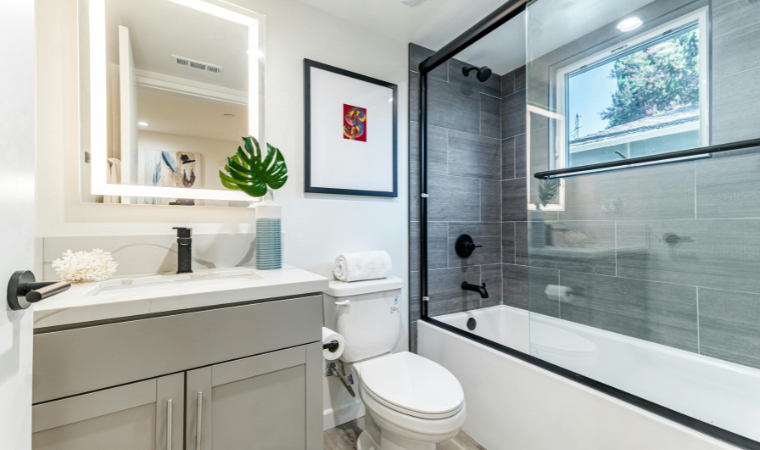A bathroom should feel fresh and clean, but when your bathroom smells like sewage after shower, it’s not only unpleasant but also a sign of an underlying plumbing issue. The smell of sewage typically comes from gases escaping into your home, and ignoring it can lead to bigger problems such as health risks and expensive repairs. Understanding the causes and knowing how to fix them is the first step to solving the issue.
Common Reasons Why Your Bathroom Smells Like Sewage After Shower
- Dry or Damaged P-Trap
One of the most common reasons a bathroom smells like sewage after shower is a dry or faulty P-trap. The P-trap is a U-shaped pipe beneath sinks, showers, and tubs that holds water to block sewer gases. If it dries out due to lack of use or develops a crack, foul odors can seep into your bathroom.
- Clogged Shower Drain
Hair, soap scum, and debris often build up in the shower drain. Over time, this creates a blockage where water collects and bacteria grow, leading to bad odors. A clog can also prevent the P-trap from functioning properly, allowing gases to escape.
- Vent Pipe Problems
Your plumbing system has vent pipes that release sewer gases outside the house. If a vent pipe is blocked by leaves, debris, or even ice in colder climates, gases can back up into the bathroom. This blockage can cause the strong sewage smell you notice after showering.

- Broken or Loose Seals
Shower drains and toilet seals are designed to be airtight. If the wax ring under the toilet loosens or the shower drain seal cracks, it creates a path for sewer gases to escape directly into your bathroom.
- Sewer Line Issues
In more serious cases, the smell may be due to a crack or blockage in the main sewer line. This is a bigger plumbing problem and requires immediate attention to prevent damage and contamination.
How to Fix a Bathroom That Smells Like Sewage After Shower
Check and Fill the P-Trap
If your shower isn’t used frequently, pour a bucket of water down the drain to refill the P-trap. Adding a small amount of mineral oil can help slow evaporation and keep the trap sealed longer.
Clean the Shower Drain
Remove the drain cover and clean out any visible debris. Use a drain snake or baking soda and vinegar mixture followed by hot water to clear clogs and freshen the drain. This step often eliminates odors caused by buildup.
Inspect the Vent Pipe
If you suspect a blocked vent pipe, check the vent opening on your roof for debris. You may need a plumber to safely clear blockages if they are deep inside the system.
Reseal Shower and Toilet Drains
Apply new plumber’s putty around the shower drain if it looks loose. For toilets, replacing the wax ring is usually enough to restore a tight seal and stop sewer gas leaks.
Call a Professional for Sewer Line Problems
If the smell persists despite your efforts, the issue may be in the sewer line itself. A licensed plumber can inspect the pipes with specialized equipment and repair cracks or blockages before the situation worsens.

Preventing Sewage Smells in the Future
- Run water regularly in unused drains to keep P-traps full.
- Install drain covers to catch hair and debris.
- Schedule routine plumbing inspections.
- Avoid flushing items other than toilet paper.
Final Thoughts
If your bathroom smells like sewage after shower, don’t ignore it. While some causes, like a dry P-trap or clogged drain, are easy fixes, others may require professional help. Addressing the issue quickly not only improves your bathroom’s comfort but also protects your home from potential plumbing damage.

